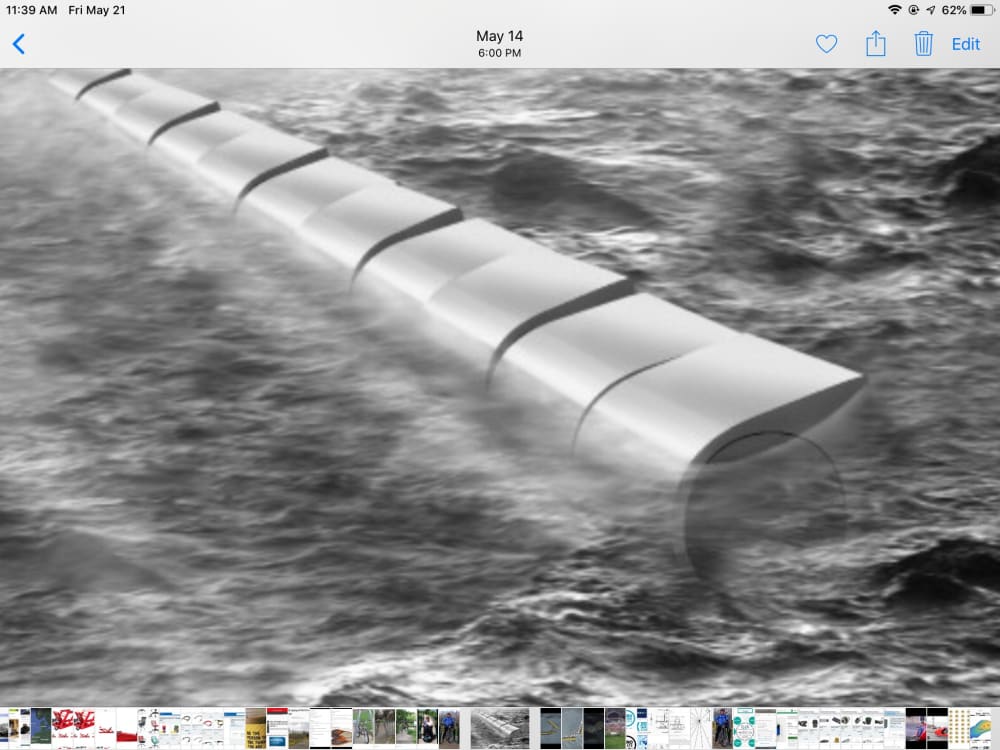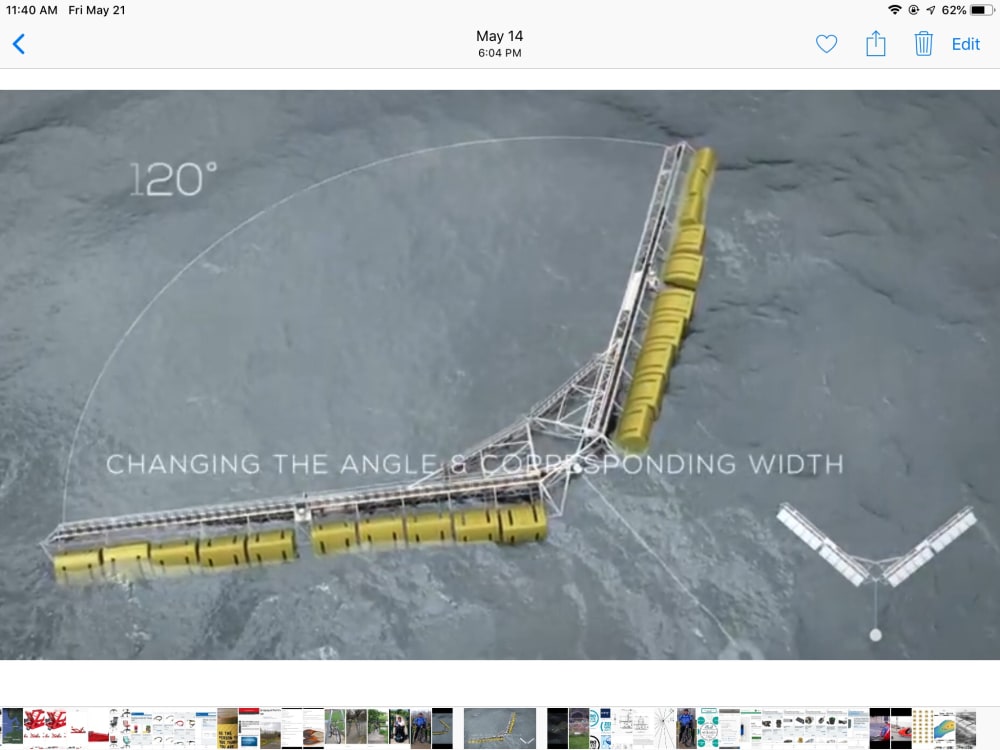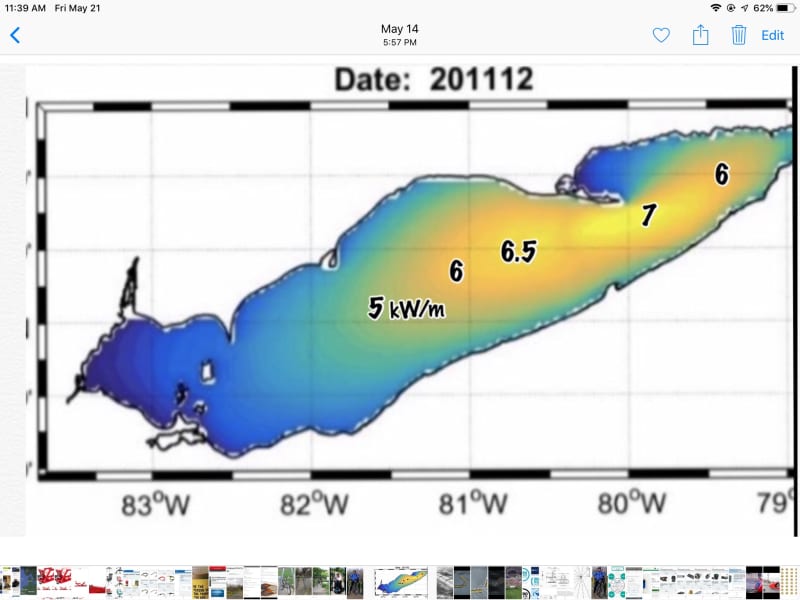The first graphic shows storm wave energy up to 7 kw per meter of wavefront for Lake Erie. These storm waves cause millions of dollars of damage along the shorelines and climate change is making them more violent every year.
This concept uses an array of Wave Energy Converters (WECS) called Edinburgh Ducks to capture that storm wave energy, store it hydraulically within the Ducks, and thereby reduce impact on the shorelines.
Four times a year storm surges in April, October, November and December cause shoreline damage requiring millions of dollars to fix.
The second graphic shows a typical Edinburgh Duck array which would be towed out to a vulnerable shoreline location prior to the onset of a storm surge. Essentially the array can be regarded as a dynamic breakwater where the wave energy is captured by the nodding actions of the Ducks which drive hydraulic accumulators capturing up to 92% of the wave energy. The resulting wave impact on the shoreline is greatly reduced.
Currently, shoreline armoring using breakwaters, and rock rubble doesn’t work. Each year breakwaters have to be rebuilt and increasing the shoreline armouring causes unintended consequences by changing flow and currents on the lake.
As a towable array, locations most vulnerable can be protected and when the storm has subsided the array is towed back to a dock area where the hydraulic accumulators would drive hydraulic motors and electrical generators to feed into the grid or battery storage as required.
This concept was put together to address Lake Erie problems specifically, but as an adapted WEC technology, with the experience gained, as well as mitigating a problem, it provides operational field know how for ocean coastal WECs out west
Any locality experiencing shoreline damage due to storm surges can save money and earn income via exploitation of the captured wave energy.
Ocean coastal WECs can be more readily applied because this system specifically designed would see rapid development and the financial risks are greatly reduced.
The third graphic shows a preferred system which a Danish company Weptos has designed. The variable V angle accommodates wave fronts that may shift around maintaining the most efficient means for capturing the wave energy.
Initially Ducks would be of rolled steel welded construction at around an estimated $10 to $12 per kilogram all up weight.
This approach to resolving Lake Erie’s problem has never been proposed before....static devices such as breakwaters and rock rubble have been the traditional solutions.
The spinoff potential of using the technology as described is regarded as extensive because of the new WEC knowledge derived from operational experience.
Video
Like this entry?
-
About the Entrant
- Name:John Mitchell
- Type of entry:individual
- Software used for this entry:Rhino, Solidworks
- Patent status:none








